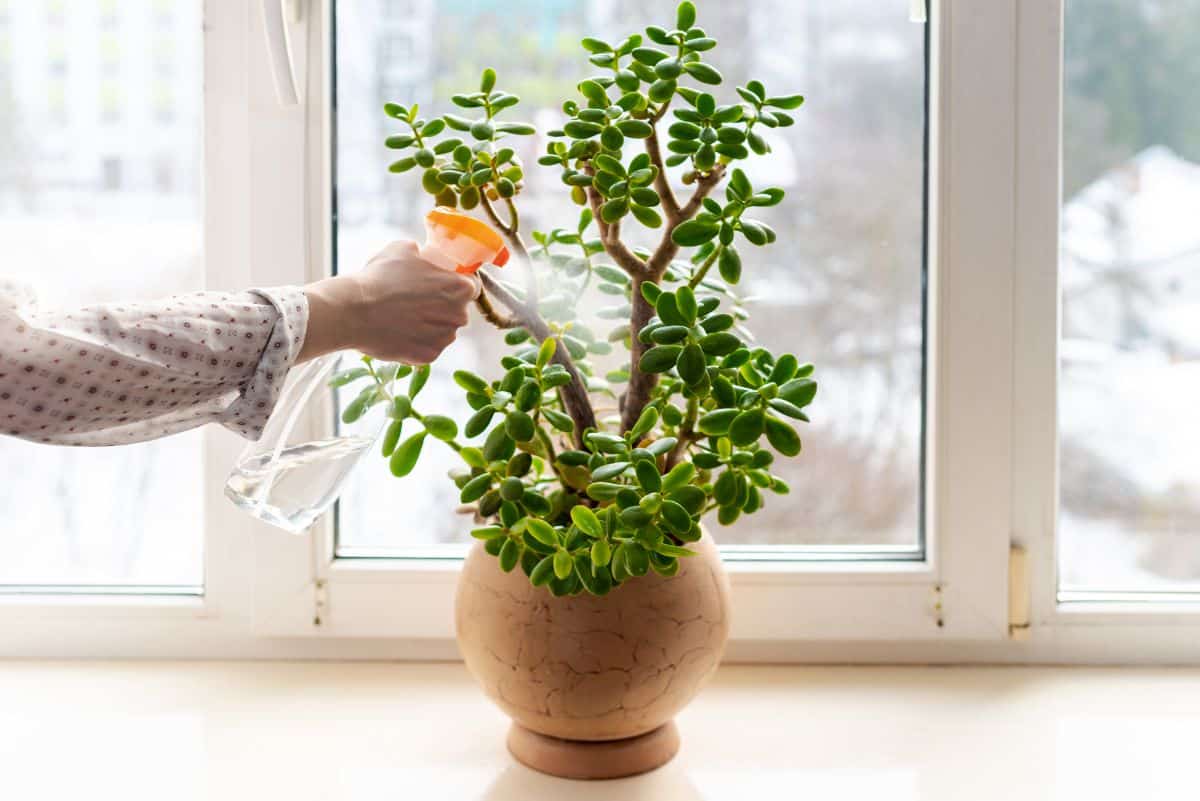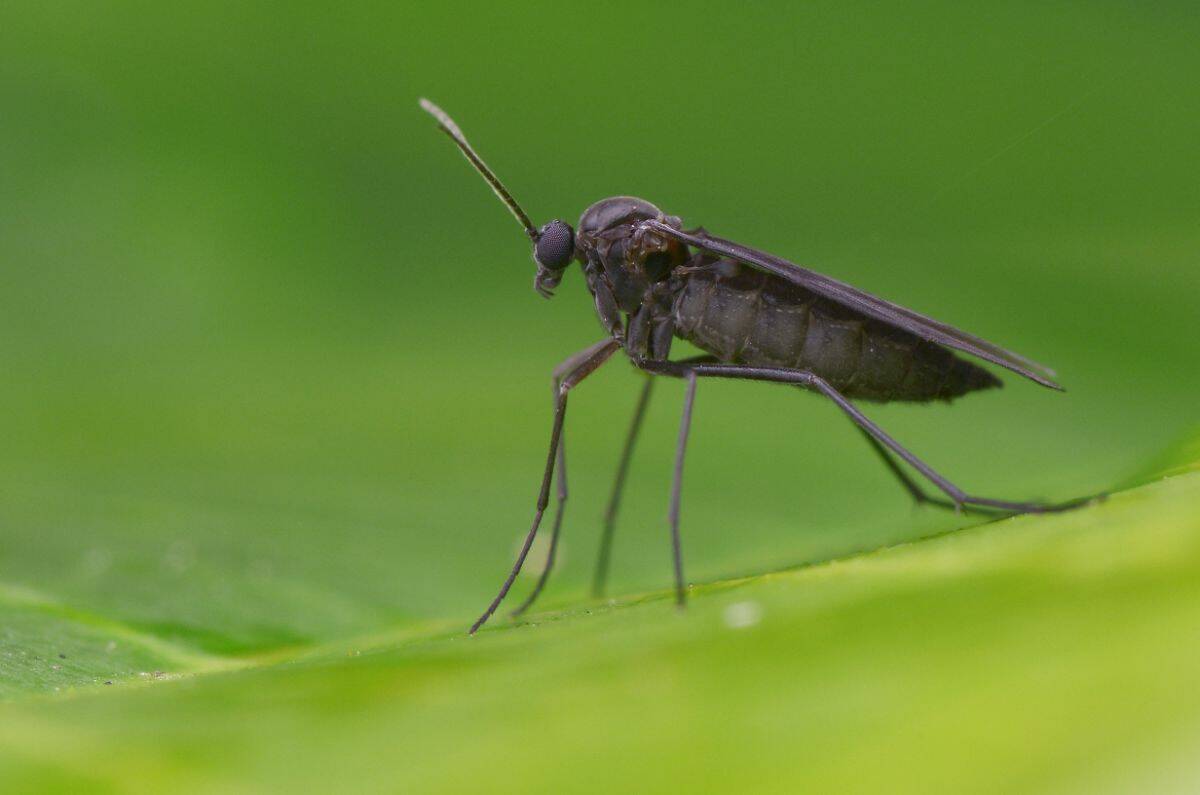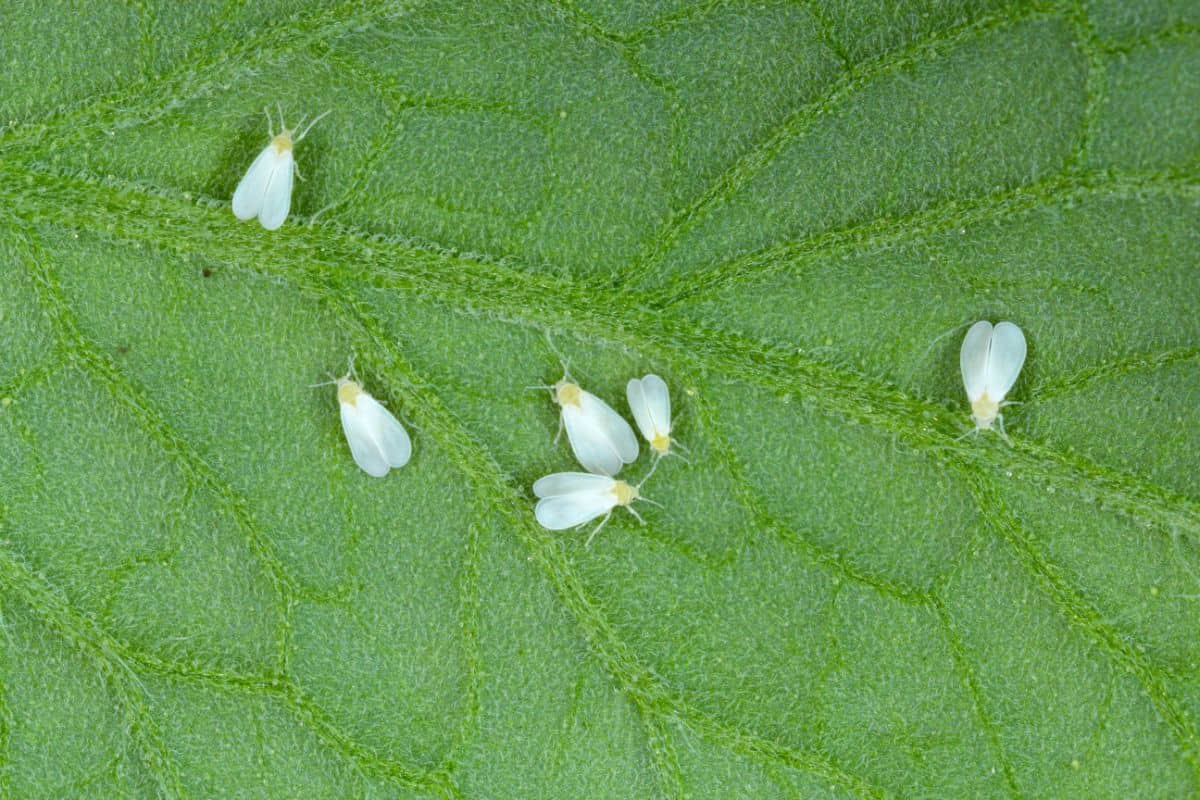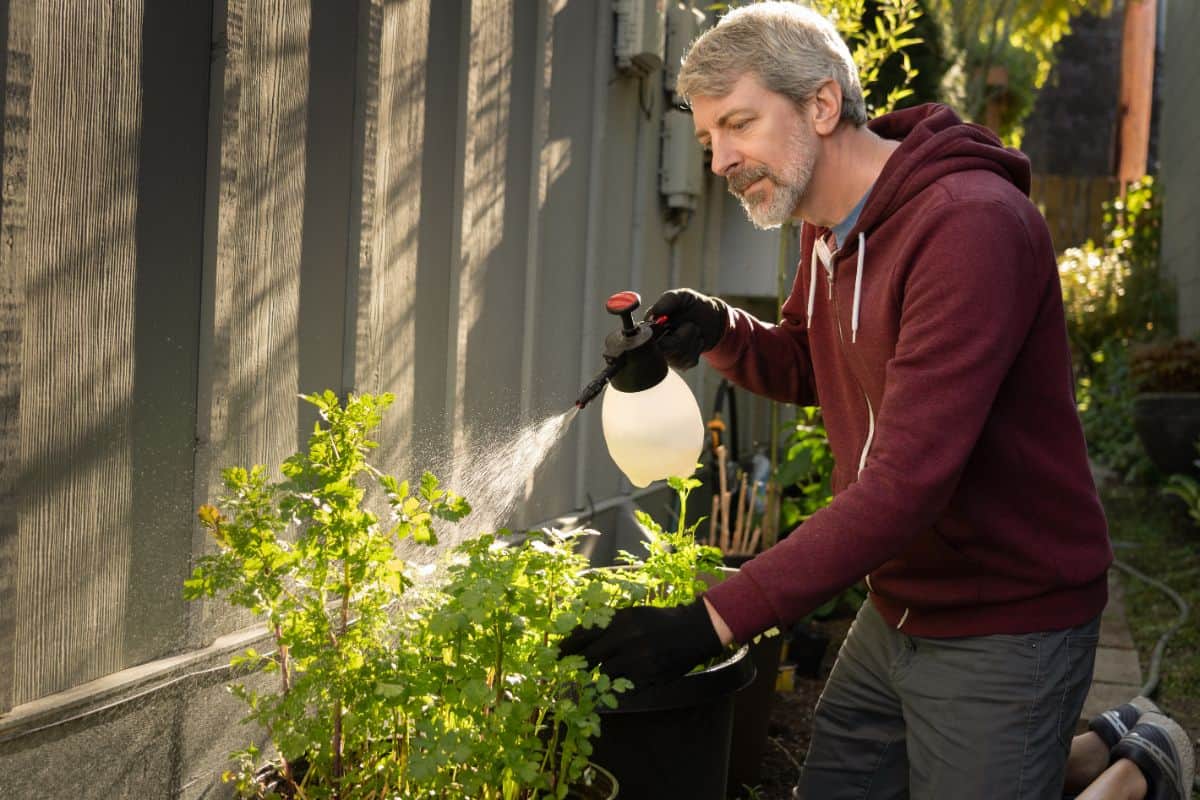As a succulent lover, you’re passionate about providing your plants with the best care possible. That’s why it’s so frustrating to see insects infesting your beautiful garden. So, how do you get rid of those pesky flies in your potted plants?

Well, unfortunately, getting rid of an infestation once it’s taken over your succulent garden isn’t an easy task. However, with hard work and consistency, you can get rid of both whiteflies and fungus gnats in your plants.
Prevention is actually much easier than treatment when it comes to succulent pests. Try to keep a close eye on your plants and look for signs of insect damage on a regular basis. The sooner can begin dealing with the problem, the easier and quicker it will be to get rid of them.
If you’re looking for help with other common succulent pests, read our guide here.
Jump to:
What Kind of Flies Are in Your Pot?
Before you begin to tackle your fly problem, you need to identify the type of insect that you’re dealing with. While treatment for both whiteflies and fungus gnats is about the same, you’ll want to know more about each insect’s life cycle so you can know what to expect with your treatment.
Unfortunately, in order to identify the insects, you’ll need to get in for a closer look. You can either get up close and personal with your plants or set down a sticky yellow insect trap to capture a few.
Fungus Gnats

One of the most common pests encountered by succulent gardeners is fungus gnats. Fungus gnats are tiny black or gray winged insects. They typically measure about ⅛ to 1/16 inch long.
They are also sometimes referred to as sciurid flies but are not to be confused with fruit flies. As the name implies, fruit flies prefer to live near fruit while fungus gnats enjoy living in your succulent collection.
Fungus gnats love damp conditions, especially if there is decaying plant matter nearby. If you consistently experience problems with fungus gnats, you might need to reevaluate your watering habits and plant hygiene.
Adult fungus gnats lay their eggs on the surface of organic matter found in soil. They can lay up to 200 eggs at a time. The eggs will hatch after about three days, after which the larvae will burrow into the soil to feed on decaying plant material and fungi.
The larval stage lasts for about two weeks. Then, the adult fungus gnats emerge from the soil to finish their life cycle within the span of about a week.
Though fungus gnats don’t always harm succulents directly, once they run out of their preferred food choice, they can and will feed on your succulents’ roots. This will not only stunt your plants’ growth, but it can also cause leaves to yellow and drop.
Whiteflies

You can easily identify a whitefly infestation by the insects’ white wings and moth-like appearance. They measure about 1/15 inch in length and are closely related to aphids and mealybugs. They generally prefer leafier succulents but can affect nearly any species of succulent.
No products found.
Although adult whiteflies are typically found near the tops of plants, the eggs and nymphs live on the underside of your plants’ leaves. Nymphs look like flat, white ovals and somewhat resemble scale in appearance.
The life cycle of whiteflies lasts about two or three months from egg to natural death. Eggs are laid on the undersides of leaves. Upon hatching, the nymphs get to work right away feeding on the leaves.
After two weeks or so of feeding on your beloved succulents, whitefly nymphs enter a pupal stage where they do not feed. This stage lasts about a week before the whiteflies emerge from the pupas as adults.
It takes about 25 days for a whitefly to grow from an egg to an adult. The entire whitefly lifespan lasts only about two or three months.
Whiteflies are not tolerant of cold climates, so if you live in an area where the winters are quite frigid, you’ll only need to worry about whitefly infestations during the warmer months. However, if you live in a warmer climate, whiteflies may be a concern year-round.
Of course, if you keep your plants indoors, the comfortable temperature of your house provides the ideal year-round environment for whiteflies to thrive.
How to Get Rid of Flies
Although using harsh chemical pesticides is an option, it’s not one that we would recommend. Not only do chemical pesticides put the long-term health of your plants at risk, but you’re also potentially exposing yourself and your family members to harmful substances.
Both whiteflies and fungus gnats are fairly easy to get rid of without the use of chemical pesticides, so it’s best to use less harmful methods of pest control if possible.
Dry Soil

If you’re dealing with a fungus gnat infestation, one of the easiest ways to treat your garden is to simply let the soil dry out. Succulents are used to living in drought conditions, so if you typically water them once per week, try waiting an extra four or five days before watering them.
Fungus gnat larvae can’t live for more than a couple days without moisture in the soil, so letting your succulents dry out a bit is usually enough to put an end to an entire group of gnats.
High-Pressure Water Spray

Of course, if you’re dealing with whiteflies, drying your soil out isn’t going to help. Instead, you can use water to your advantage. A high-pressure spray of water is a great way to knock eggs, nymphs, and adults off your plants.
While this will have little to no long-term effect on the adults, knocking off eggs and nymphs will completely disrupt their lifecycle and their removal will be permanent. It won’t completely solve your problem, but it’s a great place to start.
Insecticidal Soap

Whether you choose to buy insecticidal soap at your local garden center or make it at home, it’s a great option in getting rid of both whitefly and fungus gnat infestations. Plus, it’s relatively inexpensive and won’t harm plants or people.
If you’re making your own insecticidal soap at home, you’ll want to use about a teaspoon of soap for every quart of water. Castille soap is a popular choice, but other soap will work well too.
Remember, the oil in the soap can contribute to sunburn if applied during the day, so if you’re using this method of pest control, be sure to apply it after the sun goes down.
Neem Oil

If you’re looking for a natural but effective method of pest control, look no further than neem oil. Neem oil is a natural derivative of the neem tree that is naturally pesticidal.
To use neem oil against fungus gnats, you can make a soil drench by diluting the oil with a bit of water and applying it directly to the soil. You can also spray your succulents directly to help get rid of any lingering adult gnats.
For whiteflies, you’ll need to make sure to apply the neem oil to the undersides of your succulents’ leaves. If your plants and pots are small enough, you can simply hold the soil in the pot with your hand while you gently tilt or flip over the plant to spray. Some gardeners also use plastic wrap to keep the soil in place while they turn the plants over.
If your plants and pots are too large, or you don’t trust yourself not to drop your beloved plants, you’ll just need to be extra careful in applying the spray to the undersides of every leaf.
How to Prevent Flies in Your Potted Plants
As with most pests, preventing an infestation is far easier than getting rid of one. Keeping pests at bay may require a bit more time and effort in your weekly gardening routine, but it’s much better than risking the loss of your succulents to hungry insects.
The most important aspect of preventing whiteflies and fungus gnats is regular monitoring. Keep a close eye on your plants and regularly check for any insect damage. You might also consider setting out sticky yellow insect traps among your plants. This won’t entirely keep them off your plants, but it will give you an idea of how big of a population you’re dealing with.
Good plant hygiene is also key in preventing pests. Be sure to remove any dead leaves or stems from your succulents’ containers as soon as possible. The less decaying matter that’s lying around, the less appealing it is to pests.
It’s also important to follow proper succulent watering guidelines. Make sure your soil isn’t overly moist. Not only does this encourage a population explosion of pests, but your plants may also be at risk for developing root rot. Remember, succulents are drought loving plants, so don’t be afraid to let the soil dry out a bit between watering.
Keeping pests out of your succulents and cacti may be as easy as bringing them indoors during certain seasons. Just be sure that the pots don’t contain any pests that might infect the rest of your indoor plants.
Many gardeners recommend a quarantine period any time you bring new plants into the house, whether they’re coming from a nursery or just outside. This will give you a chance to treat any problems before they take over your entire succulent collection.
You Might Also Like:


greys4u
Thanks for the info, I am dealing with dead flies indoors, 5 were dead inside the room where the succulents are and three were dead outside the room. I have no idea where they are coming from. One looked like a horsefly and the room does have a window
Maia Feizi
Please sign me up for the newsletter